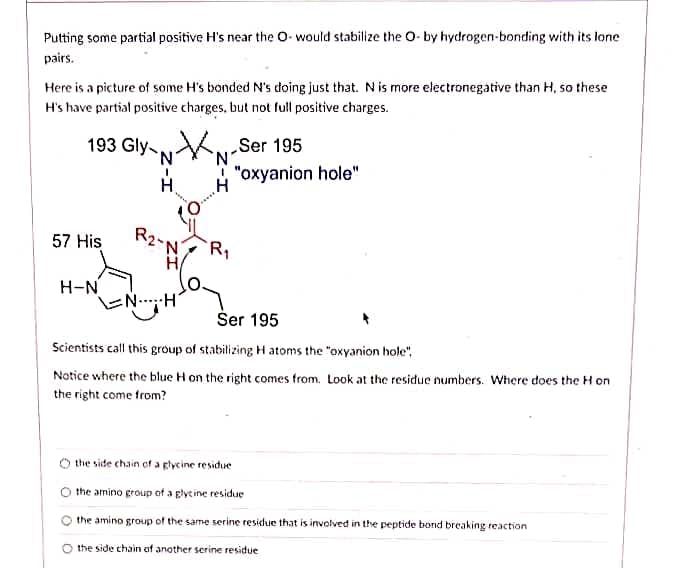Putting some partial positive H's near the O- would stabilize the O- by hydrogen-bonding with its lone pairs. Here is a picture of some H's bonded N's doing just that. N is more electronegative than H, so these H's have partial positive charges, but not full positive charges. 193 Gly -Ser 195 N' N. "oxyanion hole" R2- 57 His R, H-N EN..H Šer 195 Scientists call this group of stabilizing H atoms the "oxyanion hole", Notice where the blue H on the right comes from. Look at the residue numbers. Where does the H on the right come from? the side chain of a glycine residue the amino group of a glycine residue the amino group of the same serine residue that is involved in the peptide bond breaking reaction the side chain of another serine residue
Electronic Effects
The effect of electrons that are located in the chemical bonds within the atoms of the molecule is termed an electronic effect. The electronic effect is also explained as the effect through which the reactivity of the compound in one portion is controlled by the electron repulsion or attraction producing in another portion of the molecule.
Drawing Resonance Forms
In organic chemistry, resonance may be a mental exercise that illustrates the delocalization of electrons inside molecules within the valence bond theory of octet bonding. It entails creating several Lewis structures that, when combined, reflect the molecule's entire electronic structure. One Lewis diagram cannot explain the bonding (lone pair, double bond, octet) elaborately. A hybrid describes a combination of possible resonance structures that represents the entire delocalization of electrons within the molecule.
Using Molecular Structure To Predict Equilibrium
Equilibrium does not always imply an equal presence of reactants and products. This signifies that the reaction reaches a point when reactant and product quantities remain constant as the rate of forward and backward reaction is the same. Molecular structures of various compounds can help in predicting equilibrium.

Step by step
Solved in 2 steps with 2 images








